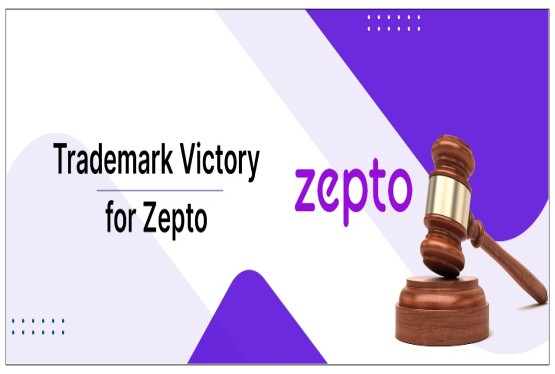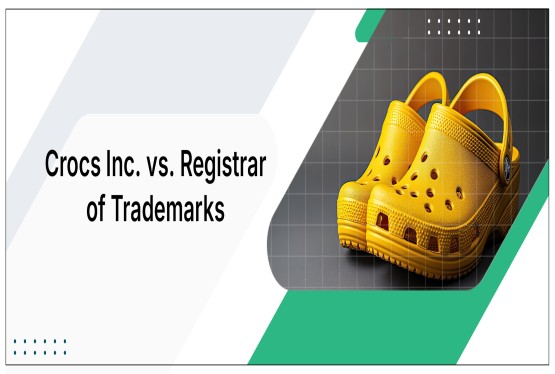Trademark withdrawal in India refers to the process by which a registered trademark owner voluntarily waives off their rights to a particular trademark. This procedure allows trademark holders to formally remove their mark from the official register maintained by the Trademark Registry. Whether due to strategic business decisions, rebranding efforts, or other reasons, the trademark withdrawal process enables trademark owners to cease protection and exclusivity associated with their trademark.
Reasons for Trademark Withdrawal
The decision to withdraw a trademark application or registration can be because of various reasons:
-
Non-Use: If a trademark has not been actively used in commerce for a continuous period, typically five years after registration, it may be subject to withdrawal. Non-use can weaken the validity of the trademark and leave it vulnerable to challenges by third parties.
-
Public Confusion: If the use of a trademark leads to public confusion or deception regarding the source or quality of goods or services, the trademark owner may opt to withdraw the mark. Maintaining a clear and distinct brand identity is crucial to avoid consumer confusion and protect the integrity of the trademark.
-
Misrepresentation or Omission: If material facts were misrepresented or omitted during the trademark registration process, which would have otherwise prevented registration, the trademark may be withdrawn. Ensuring accurate and complete disclosure during the application process is essential to maintain the validity of the trademark.
-
Change in Brand Strategy: Changes in business direction, branding strategy, or corporate structure may necessitate the withdrawal of a trademark. Rebranding efforts, mergers, acquisitions, or shifts in market focus could render the existing trademark irrelevant or incompatible with the new brand identity.
-
Legal Compliance: Failure to comply with legal requirements or regulations governing trademark registration and use may cause trademark withdrawal. Violations of trademark laws, infringement issues, or failure to maintain the trademark according to statutory requirements can jeopardize the validity of the mark.
-
Practical Considerations: Practical factors such as cost-effectiveness, market relevance, and strategic planning may influence the decision to withdraw a trademark. If maintaining the trademark proves to be financially burdensome or no longer aligns with the business objectives, withdrawal may be deemed necessary.
-
Business Closure: In cases where a business is closing down or ceasing operations, trademark withdrawal may be a right step to formally leave rights to the mark. This ensures clarity regarding the status of the trademark and prevents potential legal complications in the future.
Process of Trademark Withdrawal in India
Trademark withdrawal can be voluntary or may occur following rejection by the Trademark Officer. Reasons for withdrawal include non-use of the trademark, public confusion, misrepresentation during trademark registration, or significant changes in the brand.
The legal foundation for trademark withdrawal in India is outlined in the Trademarks Act of 1999, particularly in Sections 47, 50, and 57. These sections define the grounds for withdrawal and the process involved. For initiating trademark withdrawal, specific forms must be filled out and submitted to the Registrar of Trademarks:
- Form TM-O: Used for withdrawal cases based on sections 47 and 57 of the Trademark Act.
- Form TM-U: Employed for withdrawal scenarios falling under Section 50 of the Trademark Act. (Rs 4,500 for e-filing)
Step-by-Step Guide to Withdrawing a Trademark
Once the appropriate form is filled out, it needs to be submitted along with the prescribed fees to the Registrar of Trademarks. The fees vary based on factors such as the type of applicant and whether the withdrawal is done before or after registration.
-
Evaluation by Trademark Authority: After submission, the withdrawal request undergoes a thorough review by a trademark official to ensure compliance with regulations.
- Decision on Withdrawal: Based on the review, the trademark authority decides whether to approve or reject the withdrawal request. If approved, the trademark application is formally withdrawn.
- Record Update: Upon approval, the Trademarks Registry updates its records, indicating that the trademark application has been withdrawn.
- Effects of Withdrawal: Withdrawing a trademark results in the loss of legal claims and rights associated with the mark. The trademark returns back to the public domain, and the original owner is no longer entitled to use it.
-
Monitoring and Compliance: Trademark owners must monitor their trademarks regularly and ensure compliance with withdrawal procedures to avoid any legal issues.
By following these steps and adhering to legal provisions, trademark owners can successfully withdraw their trademarks in India. It's essential to seek guidance from legal experts or trademark attorneys to manage the process effectively.
Documentation Required for Trademark Withdrawal
Documentation required for trademark withdrawal typically includes:
Withdrawal Application Form: Depending on the grounds for withdrawal, the appropriate withdrawal application form must be completed and submitted. In India, Form TM-O or Form TM-U is used for withdrawal cases, depending on the specific reasons outlined in the Trademarks Act.
Power of Attorney (POA) or Authorization Letter: A Power of attorney or authorization letter may be required to authorize a designated individual or entity to act on behalf of the trademark owner in the withdrawal process. This document formalizes the consent for representation and submission of the withdrawal application.
Supporting Documentation: Depending on the circumstances surrounding the withdrawal, additional supporting documentation may be necessary. For example:
-
Evidence of non-use: If non-use of the trademark is cited as a reason for withdrawal, documentation demonstrating the lack of commercial use may be required.
-
Documents illustrating reasons for withdrawal: If the withdrawal is based on public confusion, misrepresentation, or changes in brand strategy, supporting documents explaining these reasons may be necessary.
-
Correspondence with the Trademarks Office: Any relevant correspondence with the Trademarks Office, such as communication regarding objections or challenges to the trademark, should be included to provide context for the withdrawal request.
Notification to the Opposition Party: If there is an existing trademark opposition to the trademark that prompts the withdrawal, it is standard practice to inform the opposing party by providing them with a copy of the withdrawal application. This promotes transparency and facilitates the resolution of any disputes.
Any other relevant documents: Depending on the specific circumstances of the trademark withdrawal, additional documents may be required to support the application and provide clarity regarding the reasons for withdrawal.
It's essential for trademark owners to ensure that all required documentation is accurately completed and submitted according to the guidelines provided by the trademark authority. Seeking guidance from legal professionals or trademark experts can help the documentation requirements and ensure compliance with the withdrawal process.
Timeframe for Completing Trademark Withdrawal Process
The estimated timeframe for completing the trademark withdrawal process typically ranges from approximately 2 to 6 months. Initially, trademark owners should allocate around 1 to 2 weeks for preparation, which involves gathering necessary documentation and completing the withdrawal application form. Once the documentation is ready, it needs to be submitted to the relevant trademark authority, which may take another 1 to 2 weeks depending on the method of submission and any processing delays. Following submission, the trademark authority will conduct a review and evaluation of the withdrawal application, which can take approximately 1 to 3 months. The decision-making process by the trademark authority, which may involve approval, rejection, or requests for further information, can take an additional 2 to 4 weeks. Upon approval, the trademark authority will update its records to reflect the withdrawal of the trademark, concluding the process. However, it's important to note that these are approximate timelines, and the actual duration at each stage may depend on factors such as the workload of the trademark office, the complexity of the case, and any administrative processes involved.
Common Mistakes to Avoid in Trademark Withdrawal
Avoiding common mistakes is crucial when undertaking the trademark withdrawal process to ensure a smooth and successful outcome. One of the primary problems is incomplete documentation, as failing to provide all required documents or submitting incomplete information can lead to delays and complications. Additionally, missing deadlines for submission or response to requests from the trademark authority can result in setbacks or rejection of the withdrawal application. Seeking legal assistance from experienced trademark attorneys is advisable to manage the process effectively and ensure compliance with legal requirements, helping to avoid errors or misunderstandings. It's essential to communicate effectively with all involved parties and provide proper notification of the withdrawal, particularly if there are ongoing legal proceedings or disputes related to the trademark such as trademark infringement. Ignoring legal obligations or requirements, such as providing accurate information or complying with procedural rules, can have adverse consequences, so it's crucial to understand and adhere to all legal obligations throughout the withdrawal process. Thorough research on the implications of trademark withdrawal, including potential impacts on brand reputation, market positioning, and legal rights, is essential to make informed decisions and minimize unforeseen issues. Lastly, overlooking considerations such as brand identity, marketing strategy, and customer perception during rebranding efforts can result in ineffective or costly initiatives, emphasizing the importance of careful planning and strategizing to maintain brand consistency. By avoiding these common mistakes and taking proactive measures, trademark owners can work the withdrawal process effectively and achieve their desired outcomes.
HOW CAN COMPLIANCE CALENDAR HELP?
We at Compliance Calendar can provide invaluable assistance in managing the trademark withdrawal process effectively. We are a team of experienced and professional trademark attorneys who not only register your trademark but also protect your trademark during the complete process. You can register your trademark today easily and conveniently with our specialized team and experts. For any further clarifications and suggestions, kindly connect on 9988424211 or mail at info@ccoffice.in.






























_(b)_of_the_Trademark_Act,_1999_(1)_crop10_thumb.jpg)



_crop10_thumb.jpg)




























_crop10_thumb.jpg)
_crop10_thumb.jpg)






_crop10_thumb.jpg)








_crop10_thumb.jpg)
_crop10_thumb.jpg)


_crop10_thumb.jpg)





























_crop10_thumb.jpg)

















_crop10_thumb.jpg)






_crop10_thumb.jpg)












































































































































_crop10_thumb.jpg)




































_crop10_thumb.jpg)












_crop10_thumb.jpg)






















